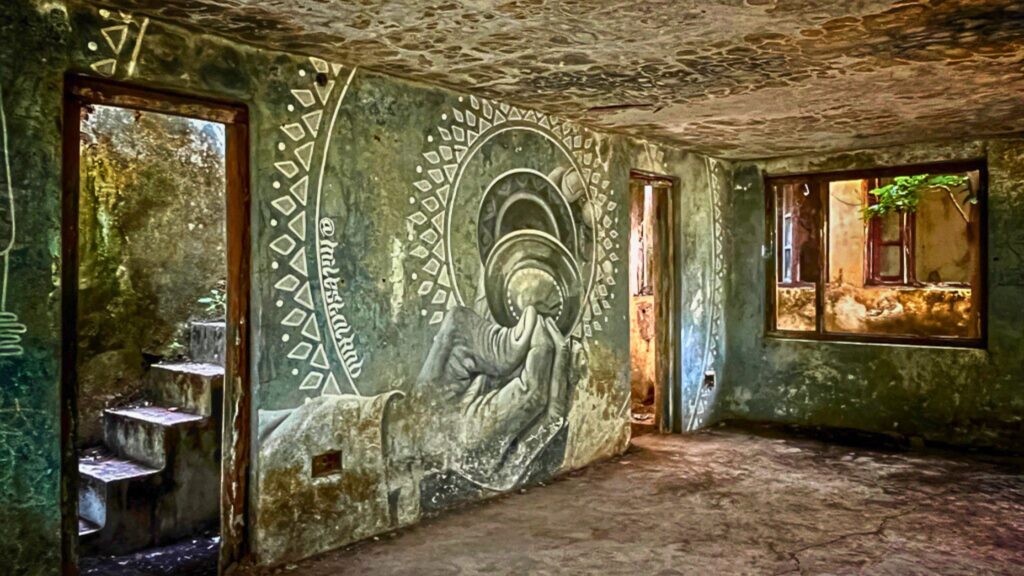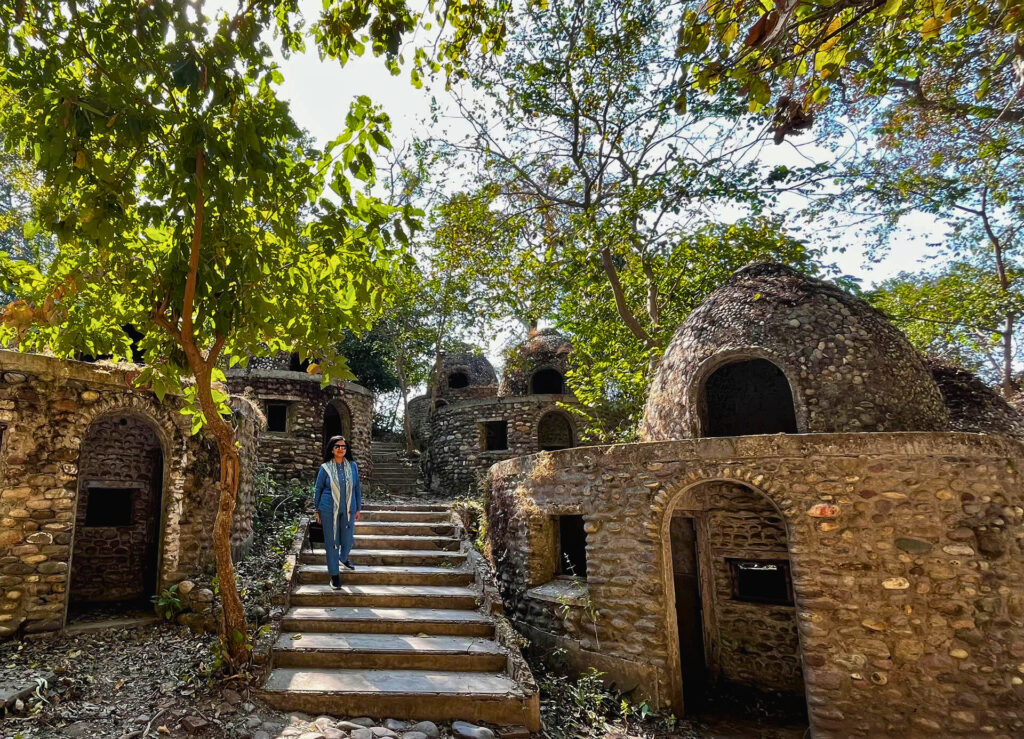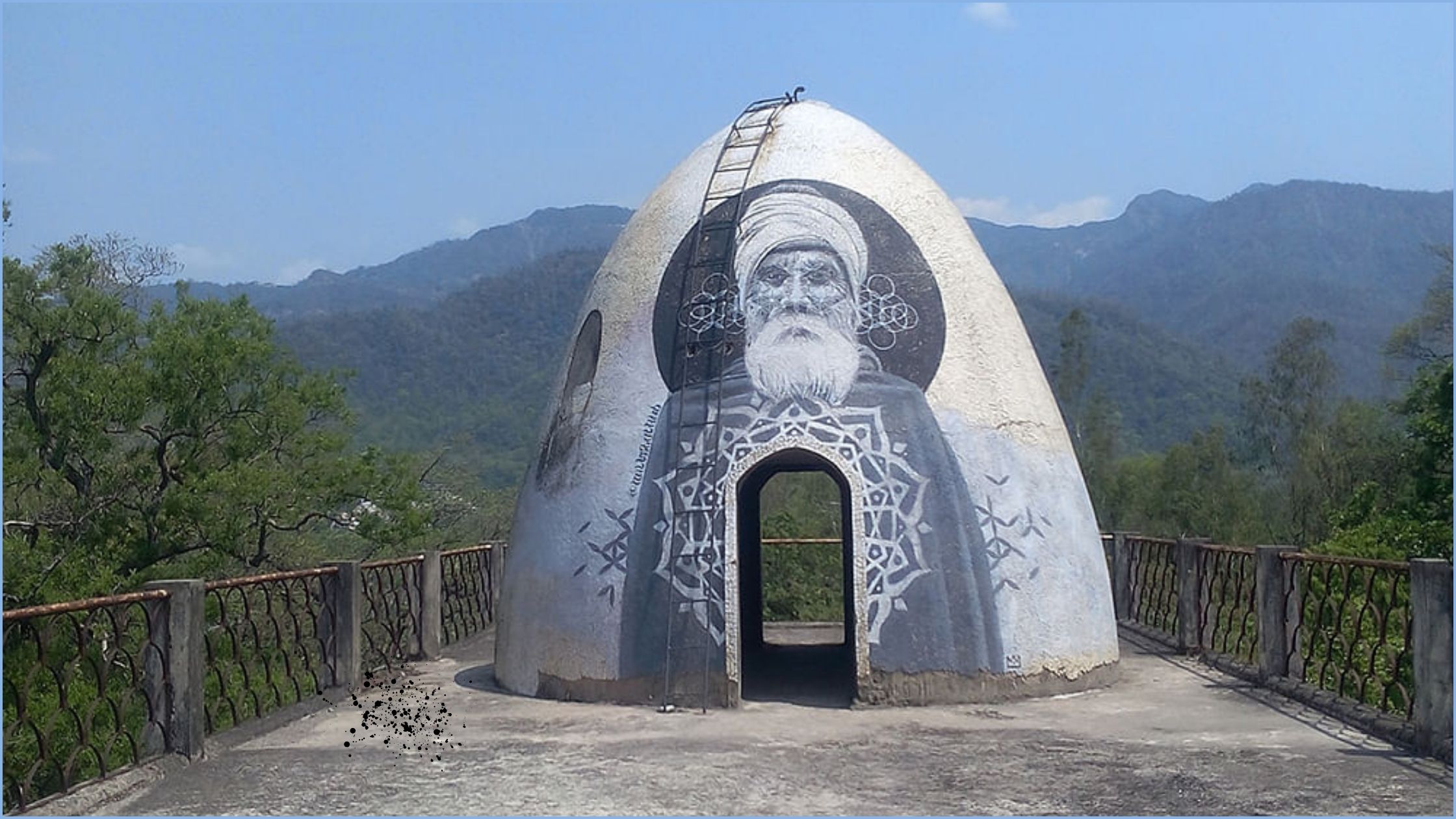The Beatles Ashram (Chaurasi Kutiya): A Legacy of Music, Meditation, and Mysticism
The Beatles Ashram, also known as Chaurasi Kutiya, is a serene and historic retreat nestled in the foothills of the Himalayas in Rishikesh, Uttarakhand, India. This ashram gained international fame in the late 1960s when the iconic British rock band, The Beatles, visited the site to learn transcendental meditation under the guidance of Maharishi Mahesh Yogi. Today, the ashram remains a place of profound historical, cultural, and spiritual significance, attracting visitors from all corners of the globe.
Historical Background of Chaurasi Kutiya
The Beatles Ashram was originally established in the 1960s by Maharishi Mahesh Yogi, the founder of the Transcendental Meditation movement. Maharishi Mahesh Yogi sought to create a sanctuary for individuals seeking spiritual enlightenment through meditation. The ashram, situated within the Rajaji Tiger Reserve, offered a tranquil environment perfect for introspection and meditation. The site earned the name “Chaurasi Kutiya” due to the 84 meditation huts (“kutiyas”) built for practitioners. These small, dome-shaped structures were designed to provide solitude for meditation.
The ashram gained worldwide attention in 1968 when The Beatles, one of the most famous bands in the world, visited the site. This marked a turning point for the ashram, elevating it to international prominence. Members of The Beatles—John Lennon, Paul McCartney, George Harrison, and Ringo Starr—stayed at Chaurasi Kutiya to learn transcendental meditation and escape the pressures of their celebrity lives. Their visit not only changed the trajectory of their music but also introduced millions in the West to Indian spirituality and meditation practices.
Architecture and Design
The Beatles Ashram is often referred to as Chaurasi Kutiya, which translates to “84 huts.” The name reflects the numerous meditation pods or “kutiya” that were built for practitioners to meditate in solitude. These dome-shaped structures are a unique architectural feature of the ashram. Made of local stones and cement, the huts blend harmoniously with the natural surroundings.
In addition to the meditation pods, the ashram includes lecture halls, a dining area, a library, and the Maharishi’s private residence. The main lecture hall, known as the “Satsang Hall,” was where the Maharishi held spiritual discourses. The ashram also features an open-air platform with stunning views of the Ganges River and the Himalayan foothills.
After being abandoned for several years, the ashram fell into a state of disrepair. However, its dilapidated structures now exude a certain charm, with overgrown vegetation and graffiti art adding to its mystique. In recent years, artists and visitors have adorned the walls with vibrant murals and paintings, many of which pay homage to the Beatles and their music.
The Beatles’ Experience at the Ashram
The Beatles’ stay at Chaurasi Kutiya was both transformative and tumultuous. Arriving in February 1968, they were joined by their wives, girlfriends, and several other notable personalities, including singer Donovan and actress Mia Farrow. For several weeks, they immersed themselves in the practice of transcendental meditation, attended lectures by Maharishi Mahesh Yogi, and spent time in quiet contemplation.
The serene surroundings of the ashram inspired The Beatles to create some of their most memorable music. During their stay, they wrote many songs that would later feature on their “White Album” and other subsequent releases. Tracks like “Dear Prudence,” “Mother Nature’s Son,” “Sexy Sadie,” and “The Continuing Story of Bungalow Bill” are believed to have been influenced by their time at the ashram.
However, their visit was not without controversy. Reports of disagreements and dissatisfaction with Maharishi Mahesh Yogi’s leadership led to the group’s premature departure. Despite these issues, the experience left a lasting impact on The Beatles and significantly influenced their music and worldview. George Harrison, in particular, developed a lifelong interest in Indian spirituality, which continued to shape his solo career and personal life.

Revival and Tourism
After the Maharishi left Rishikesh in the late 1970s, the ashram was abandoned and eventually fell under the jurisdiction of the Forest Department. For many years, it remained inaccessible and overgrown, attracting only a handful of curious visitors.
In 2015, the ashram was reopened to the public as part of the Rajaji Tiger Reserve. Efforts were made to preserve its historical and cultural significance while promoting sustainable tourism. Today, the ashram is managed as an eco-tourism site, with minimal infrastructure development to maintain its natural beauty.
Visitors to the Beatles Ashram can explore its various structures, meditate in the kutiya, and learn about its rich history. The murals and graffiti art add a contemporary touch to the site, celebrating the legacy of the Beatles and their music. The ashram also hosts events, workshops, and guided tours, attracting a diverse range of tourists from around the world.
The Modern-Day Experience
Walking through the Beatles Ashram is like stepping back in time. The tranquility of the surroundings, combined with the echoes of history and creativity, creates a unique atmosphere. The meditation pods provide a glimpse into the simplicity and discipline of ashram life, while the artwork reflects the enduring influence of the Beatles on global culture.
The site also offers opportunities for birdwatching and nature walks, as it is located within the Rajaji Tiger Reserve. The ashram’s proximity to the Ganges River adds to its spiritual allure, making it an ideal destination for those seeking peace and rejuvenation.
Cultural and Spiritual Significance
The Beatles Ashram represents the confluence of Eastern spirituality and Western popular culture. The Beatles’ visit popularized Transcendental Meditation and sparked a global interest in Indian spirituality, yoga, and meditation practices. This cultural exchange had a lasting impact on the Western world, influencing music, art, and lifestyle choices.
For spiritual seekers, the ashram remains a symbol of inner peace and self-discovery. The Maharishi’s teachings emphasized the importance of meditation in achieving higher states of consciousness and personal fulfillment. Even decades after its abandonment, the ashram continues to inspire visitors to explore their spiritual potential.

Nearby attractions
The Beatles Ashram (Chaurasi Kutiya) is surrounded by various attractions in and around Rishikesh, offering visitors a blend of spirituality, adventure, and natural beauty. Here are some notable nearby attractions:
1. Triveni Ghat
- Distance: Approximately 3 km from the ashram.
- Significance: A sacred ghat where devotees perform rituals and offer prayers to the Ganges River.
- Highlights: The evening Ganga Aarti (a prayer ceremony) is a mesmerizing experience, with the chants, lamps, and flowers creating a serene ambiance.
2. Ram Jhula
- Distance: Around 1 km from the ashram.
- Significance: An iconic suspension bridge over the Ganges River. It connects the two banks of Rishikesh and serves as a pedestrian pathway.
- Highlights: The bridge offers stunning views of the river and the surrounding Himalayan foothills. Nearby, you’ll find ashrams, eateries, and local markets.
3. Lakshman Jhula
- Distance: About 3 km from the ashram.
- Significance: Another famous suspension bridge in Rishikesh, associated with the legend of Lord Lakshman crossing the river on a jute rope.
- Highlights: Visitors can explore temples, cafes, and shops near the bridge while enjoying the peaceful river views.
4. Parmarth Niketan Ashram
- Distance: Around 1.5 km from the ashram.
- Significance: One of the largest and most renowned ashrams in Rishikesh, known for its yoga, meditation programs, and spiritual teachings.
- Highlights: The evening Ganga Aarti at Parmarth Niketan is another unforgettable experience for spiritual seekers.
5. Swarg Ashram
- Distance: Adjacent to the ashram, within walking distance.
- Significance: A spiritual retreat with a cluster of ashrams, temples, and yoga centers.
- Highlights: This area is perfect for those seeking a peaceful environment to meditate or practice yoga.
6. Neer Garh Waterfall (Neer Gaddu)
- Distance: Approximately 6 km from the ashram.
- Significance: A beautiful natural waterfall surrounded by lush greenery.
- Highlights: Visitors can enjoy a short trek to reach the waterfall and relax in the refreshing pools of water.
7. Rajaji National Park
- Distance: The Beatles Ashram itself is located within the buffer zone of Rajaji Tiger Reserve.
- Significance: A sprawling wildlife reserve known for its diverse flora and fauna, including elephants, tigers, and various bird species.
- Highlights: Visitors can go for jeep safaris, birdwatching, and nature walks in the park.
8. Tera Manzil Temple (Trimbakeshwar Temple)
- Distance: Around 2 km from the ashram, near Lakshman Jhula.
- Significance: A 13-story temple dedicated to various Hindu deities.
- Highlights: Climb to the top for a panoramic view of the Ganges River and the surrounding area.
9. Vashishta Cave (Vashishta Gufa)
- Distance: Approximately 25 km from the ashram, on the Rishikesh-Badrinath Road.
- Significance: A quiet cave where Sage Vashishta is believed to have meditated.
- Highlights: Visitors can experience a deep sense of tranquility and meditate in the peaceful surroundings of the cave.
10. Adventure Activities in Rishikesh
- Distance: Available throughout the Rishikesh area.
- Significance: Rishikesh is known as the adventure capital of India.
- Highlights: Activities like white-water rafting, bungee jumping, ziplining, and camping by the Ganges are popular among tourists seeking thrill and excitement.
11. Kunjapuri Temple
- Distance: Approximately 27 km from the ashram.
- Significance: A revered Hindu temple dedicated to Goddess Durga, located on a hilltop.
- Highlights: The sunrise view from the temple is breathtaking, and the trek to the temple is an adventure in itself.
For more information about nearby attraction you can visit : click here
Legacy and Global Impact
The Beatles Ashram is more than just a historical site; it is a testament to the power of cultural exchange and the universal appeal of music and spirituality. The Beatles’ visit to Rishikesh not only transformed their music but also introduced millions of people to the practice of meditation and the philosophy of mindfulness.
The ashram’s story serves as a reminder of the timeless quest for inner peace and the transformative potential of self-discovery. It continues to inspire artists, musicians, and spiritual seekers to explore the depths of their creativity and consciousness.
Challenges and Conservation Efforts
Despite its popularity, the Beatles Ashram faces several challenges, including maintenance, environmental conservation, and managing tourist influx. The Forest Department and local authorities have taken steps to address these issues, such as regulating visitor numbers and organizing cleanup drives.
Preserving the ashram’s unique character is a delicate balance between honoring its past and accommodating modern tourism. Continued efforts are needed to protect its natural and cultural heritage for future generations.

FAQs About Beatles Ashram (Chaurasi Kutiya)
1. Where is the Beatles Ashram located?
The Beatles Ashram is located inside the Rajaji Tiger Reserve in Rishikesh, Uttarakhand, India. It sits near the banks of the Ganges River, about 2 km from Rishikesh town.
2. Why is it called the Beatles Ashram?
It is called the Beatles Ashram because the legendary British rock band, The Beatles, stayed there in 1968 to learn Transcendental Meditation under Maharishi Mahesh Yogi. Their visit brought global fame to the ashram.
3. What does “Chaurasi Kutiya” mean?
“Chaurasi Kutiya” translates to “84 huts.” It refers to the meditation pods (kutiya) built for the spiritual practitioners to meditate in solitude. These dome-shaped structures are a defining feature of the ashram.
4. What inspired the Beatles to visit the ashram?
The Beatles were drawn to the ashram to learn Transcendental Meditation, a technique taught by Maharishi Mahesh Yogi. They sought spiritual growth and relief from the stress of their fame and professional lives.
5. What songs did the Beatles write at the ashram?
The Beatles composed around 48 songs during their stay, many of which appeared on their iconic “White Album” and “Abbey Road.” Notable songs include:
- “Dear Prudence”
- “Mother Nature’s Son”
- “Ob-La-Di, Ob-La-Da”
- “Sexy Sadie”
These songs were influenced by their experiences at the ashram.
6. Is the Beatles Ashram still functional?
No, the ashram is no longer functional as a meditation center. It was abandoned in the late 1970s but has been reopened to the public since 2015 as a tourist and eco-tourism site.
7. What can visitors do at the ashram?
Visitors can:
- Explore the meditation huts, lecture halls, and other structures.
- View murals and graffiti art dedicated to the Beatles.
- Meditate in the serene environment.
- Enjoy nature walks and birdwatching as it is within the Rajaji Tiger Reserve.
- Learn about its history through guided tours.
8. How much does it cost to visit the Beatles Ashram?
The entry fee varies but typically costs:
- Indians: ₹150 per person
- Foreigners: ₹600 per person
These fees are subject to change, as they are managed by the Forest Department.
9. When is the best time to visit the Beatles Ashram?
The best time to visit is from October to March, as the weather is pleasant. Avoid visiting during the monsoon (July–September) due to heavy rainfall and slippery paths.
10. Why was the ashram abandoned?
The ashram was abandoned in the late 1970s after Maharishi Mahesh Yogi left Rishikesh to focus on other projects. Without proper maintenance, the site fell into disrepair until its revival as a tourist destination.
11. Is the ashram part of the Rajaji Tiger Reserve?
Yes, the Beatles Ashram is within the Rajaji Tiger Reserve. This adds to its natural beauty but also means visitors must respect the rules and guidelines of the reserve to protect its flora and fauna.
12. What impact did the Beatles’ visit have on Indian tourism?
The Beatles’ visit to Rishikesh brought global attention to Indian spirituality, meditation, and yoga. It boosted tourism to Rishikesh, establishing it as the “Yoga Capital of the World.”
13. What is the legacy of the Beatles Ashram today?
The Beatles Ashram is a symbol of the fusion of Eastern spirituality and Western culture. It continues to inspire people from around the world to explore meditation, creativity, and self-discovery.
Conclusion
The Beatles Ashram (Chaurasi Kutiya) holds a special place in the hearts of millions around the world. Its unique history, picturesque setting, and spiritual significance make it a must-visit destination for anyone interested in music, meditation, or cultural history. As it stands today, the ashram is not just a relic of the past but a living symbol of harmony between East and West, tradition and modernity, and art and spirituality.
Through the efforts of conservationists and enthusiasts, the Beatles Ashram continues to thrive as a beacon of inspiration and a sanctuary for those seeking a deeper connection with themselves and the world around them.




Leave a Reply